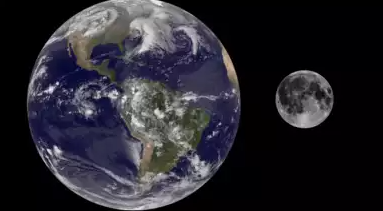A new study by the University of Wisconsin-Madison suggests that the length of a day on Earth may increase to 25 hours in 200 million years due to the Moon’s gradual drift away from our planet.
Key Findings:
The Moon is moving away from Earth at a rate of 3.82 centimeters per year.
This drift will cause the Earth’s rotational speed to slow down, resulting in longer days.
1.4 billion years ago, the Earth completed one rotation in 18 hours.
The study analyzed rock formations aged 90 million years to understand the Earth’s interaction with the Moon.

Scientific Explanation:The Moon’s gravitational interactions with Earth slow down the planet’s rotation.
As the Moon moves away, the Earth’s rotational speed decreases, causing longer days.
This phenomenon is known as “Milankovitch cycles,” which affect sunlight distribution and climate rhythms.
Implications:The study highlights the dynamic relationship between the Earth and the Moon.
Understanding this relationship can provide insights into the Earth’s climate and geological history.
Further research on older rocks may reveal more about the Earth-Moon interaction.
Context:This study builds upon previous research, including the work of Russian scientist Jacques Laskar in 1989.
The findings emphasize the significant impact of the Moon’s drift on the Earth’s rotation and climate.





